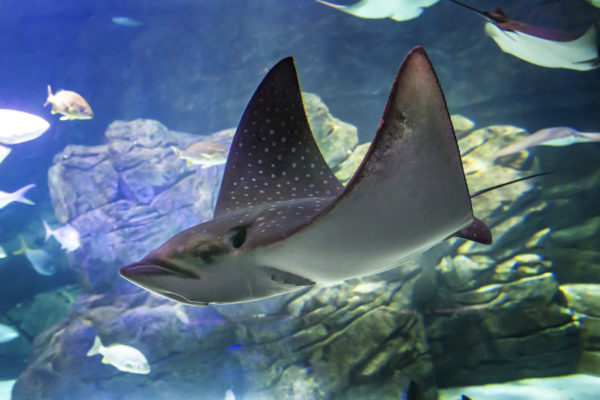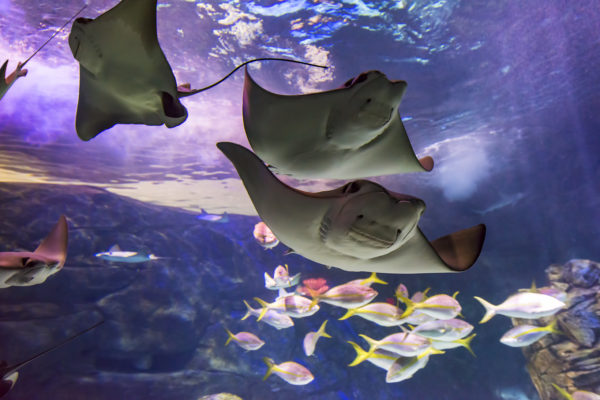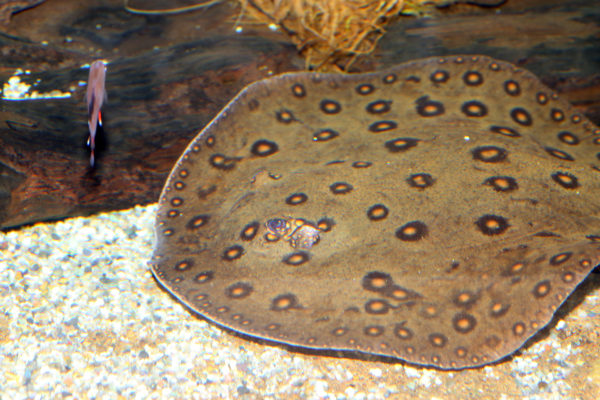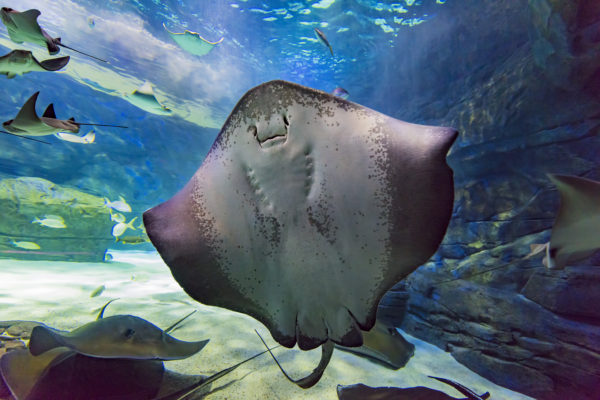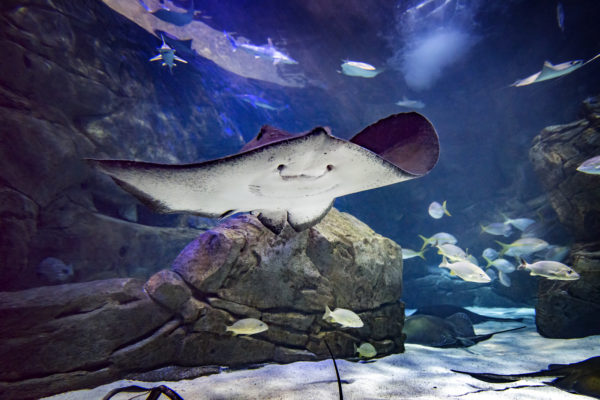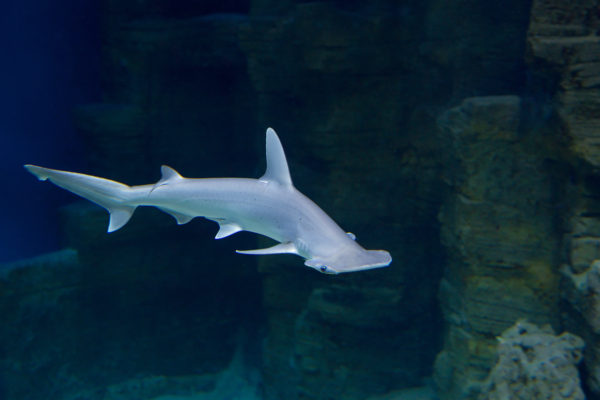Spotted Eagle Rays
This beautiful ray consists of three species that inhabit tropical waters in the Atlantic, Indo-Pacific and East Pacific. Deserving of the name eagle ray, they are known to jump completely out of the water to escape predators or dislodge parasites. You can easily spot our eagle rays because they are covered in beautiful spotted markings!

